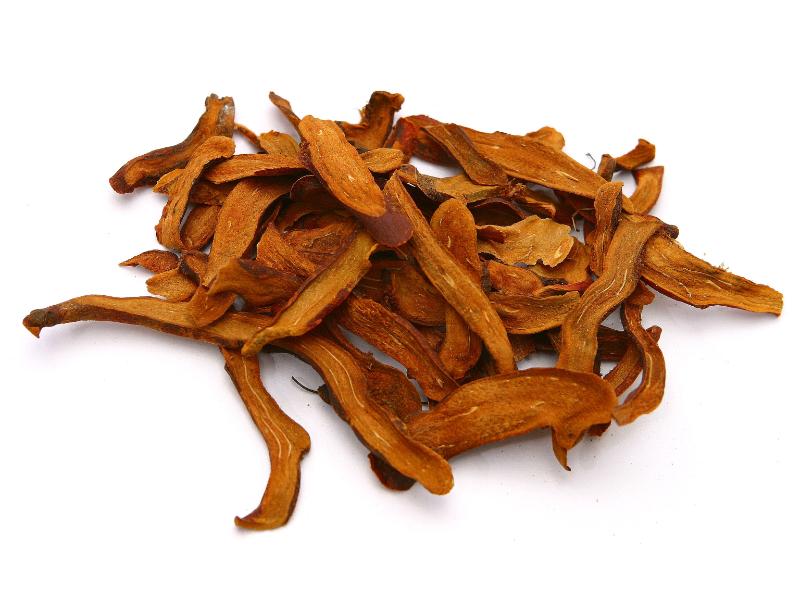Search in medicinals
Drynariae Rhizoma
Drynaria [root]
骨碎补 〔骨碎補〕 gǔ suì bǔ

Alternate Chinese names: 毛姜 máo jiāng
Kingdom: Plant
Origin in PRC Pharmacopoeia: Drynaria fortunei (Kunze) J. Sm. (PRC Pharmacopoeia)
Origin in unofficial sources: Drynaria fortunei (Kunze) J. Sm.*; Drynaria baronii (Christ) Diels; Drynaria propinqua (Wall.) J. Sm.; Davallia mariesii Moore; Pseudodrynaria coronans (Wall.) Ching; Davallia orientalis C. Chr.; Phymatodes lucida (Roxb.) Ching
Use: Medicinal
Category: Supplementing agents / Yáng-supplementing agents
Properties: Bitter; warm.
Channel entry: Liver and kidney channels.
Actions and indications:
- Supplements kidney yáng and strengthens sinew and bone: Kidney vacuity with lumbar pain, weakness of the legs, deafness and tinnitus, toothache, and/or enduring diarrhea.
- Quickens the blood and joins sinew and bone: Injury from knocks and falls, incised wounds, damage to sinew and bone, stasis with swelling and pain.
- Additional uses: Gǔ suì bǔ may also be used externally to treat vitiligo.
Dosage and method: Oral: 10–15g in decoctions. Also used externally.
Warnings: Use with care in yīn vacuity with internal heat or in the absence of static blood.
Production area: Guǎngdōng, Sìchuān, Húběi.
Back to search result Previous Next